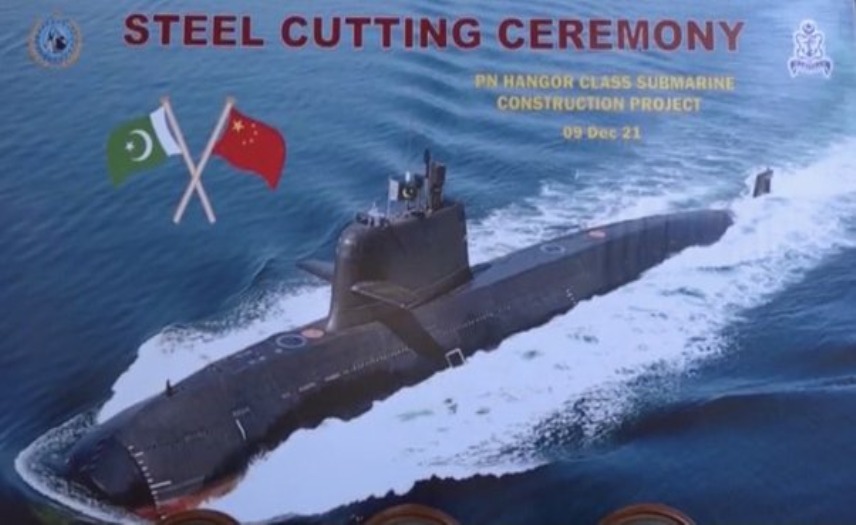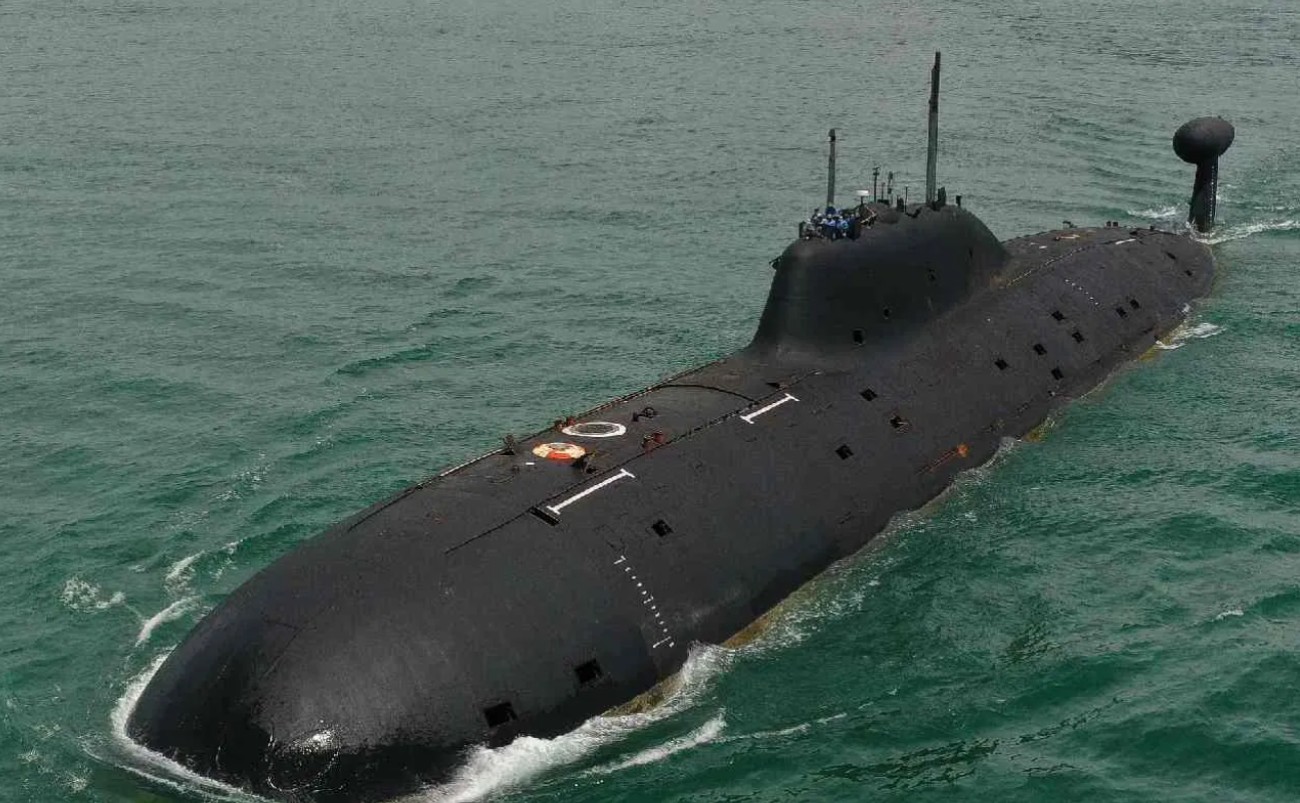By Ritu Sharma
In what could complicate the underwater battleground for the Indian Navy, the Pakistan Navy is exploring the option of having sea-based deterrence by equipping its under-construction Chinese submarines with nuclear-tipped missiles.
Pakistan’s fiscal challenges had delayed the acquisition of the S-26 Hangor class submarines from China. Instead of receiving the first submarine at the end of 2023, the first of the Yuan-class submarines was launched in May 2024.
When eight of these submarines equipped with Air-Independent Propulsion join the Pakistan Navy, it will bolster the country’s offensive sea denial strategy, which prioritizes using submarines and missile-carrying maritime patrol aircraft in naval warfare. Expected to join the Pakistan Navy by the late 2020s and early 2030s, it will strengthen the AIP-equipped submarines in its Navy to 11.
Reports now indicate that the Hangor class submarine might not be a purely conventional attack submarine. Retired Pakistan Naval officers on the state-owned television network talked about Islamabad working towards an “assured” second-strike capability.
A report in Quwa quotes Vice Admiral Ahmed Saeed and Rear Admiral Saleem Akhtar, both retired Pakistan Navy officials, discussing the acquisition of Hangor-class submarines from China. Vice Admiral Saeed indicated the submarines will be a “hybrid” piece in Pakistan’s broader deterrence posture.
“It will be a compromise between a purely conventional attack submarine and nuclear-powered boat, such as a nuclear-powered submarine (SSN) or a nuclear-powered ballistic missile submarine (SSBN),” the Quwa report said.
While retrofitting the Hangor class submarines with a nuclear reactor is implausible, the Pakistan Navy can deploy Tactical Nuclear Warheads (TNWs) on the subsurface vessels.
“It (the submarine) cannot be retrofitted to become a nuclear boat. Submarine reactors are extremely complex to build. Even China will not have a small enough to be fitted on Hangor (class submarine). If China intends to arm it with TNWs, that is a different matter,” Air Commodore Anil Jai Singh (retired) told the EurAsian Times.
The former Indian Navy submariner indicates that building a nuclear-powered submarine is an expensive endeavor, and India has not embarked on it.
Pakistan has been working on TNWs to leverage it against India since its first nuclear weapons test in 1998. TNWs are smaller, more portable, and intended for use on the battlefield rather than as strategic deterrents. Pakistan intends to use TNWs against invading Indian forces to quickly defeat the forces without triggering a full-scale strategic nuclear war.
The Hangor-class SSP will likely use a variant of the Babur-3 SLCM, which Pakistan first tested in 2018. The Babur-3 has a stated range of 450 km.
Following the Babur-3 test, the Inter-Services Public Relations (ISPR) has underscored that Sea-Launched Cruise Missile is a key component of a “credible second-strike capability.” Vice Admiral Saeed, during the discussion, contended that the Hangor class is not a dedicated nuclear platform.
Sea Leg Of Pakistan’s Nuclear Deterrence
The Pakistan Navy is keen to acquire the ability to fire nuclear weapons from sea, but it does not require a large number of such platforms.
“The PN would only require one or two dedicated boats for the nuclear role. However, the Hangor class would manage strategic roles on a part-time basis; the conventional A2/AD mission would be its primary role,” the Quwa report adds. Vice Admiral Saeed asserted that Islamabad should not stop at the Hangor-class submarine and should pursue a dedicated strategic platform.
A potential framework for a dedicated sea-based nuclear capability for Pakistan does not require a large number of units. Only two boats can be sufficient for the Pakistan Navy.
However, Commodore Singh does not seem to be bothered with just one boat in the Pakistan Navy. “One boat has very limited capability. India will know when it is in refit or undergoing maintenance or is otherwise in the harbor. PLAN (People Liberation Army-Navy) may lease one to Pak if it thinks Pak can develop/afford this capability in the future. At this point, it seems highly unlikely,” Singh opined.

Should The Indian Navy Be Concerned?
Pakistan can’t design and develop a nuclear-powered submarine, but Vice Admiral Saeed’s statements indicate that the Pakistan Navy might be studying the idea. Islamabad might be pursuing a nuclear submarine program as part of a long-term strategy.
Arming Pakistan with a nuclear-attack submarine might also benefit China, which would like the Indian Navy to be more competitive in the Indian Ocean Region (IOR). So far, China has been supplying submarines to Bangladesh, Pakistan, and Myanmar, making the underwaters in the IoR a very contested space.
Explaining how a Pakistan submarine armed with TNWs affects India, Captain Anurag Bisen (retired) said: “The Indian Navy will not be able to deploy its (aircraft) Carrier till the Pakistani nuclear submarine is accounted for.”

India has also been adopting a more flexible deterrence vis-à-vis its two aggressive nuclear-powered countries – China and Pakistan. On March 11, New Delhi successfully test-fired a long-range ballistic missile, Agni-V, with Multiple Independently Targetable Re-entry Vehicle (MIRV) technology. MIRV technology, which increases the survivability of its nuclear-tipped missiles, could also be useful for first strikes, experts have argued.
The evolving nuclear deterrence in the Indian subcontinent also gives hope to Commodore Singh. “The threat of nuclear-tipped torpedo or missile will generate concern, but using TNWs is easier said than done. Pakistan keeps threatening to use its TNWs, but has it factored in the Indian response? Our nuclear doctrine clearly states our response in retaliation against a first strike. Can Pakistan take that chance?” Singh signs off.
SOURCE : eurasiantimes
